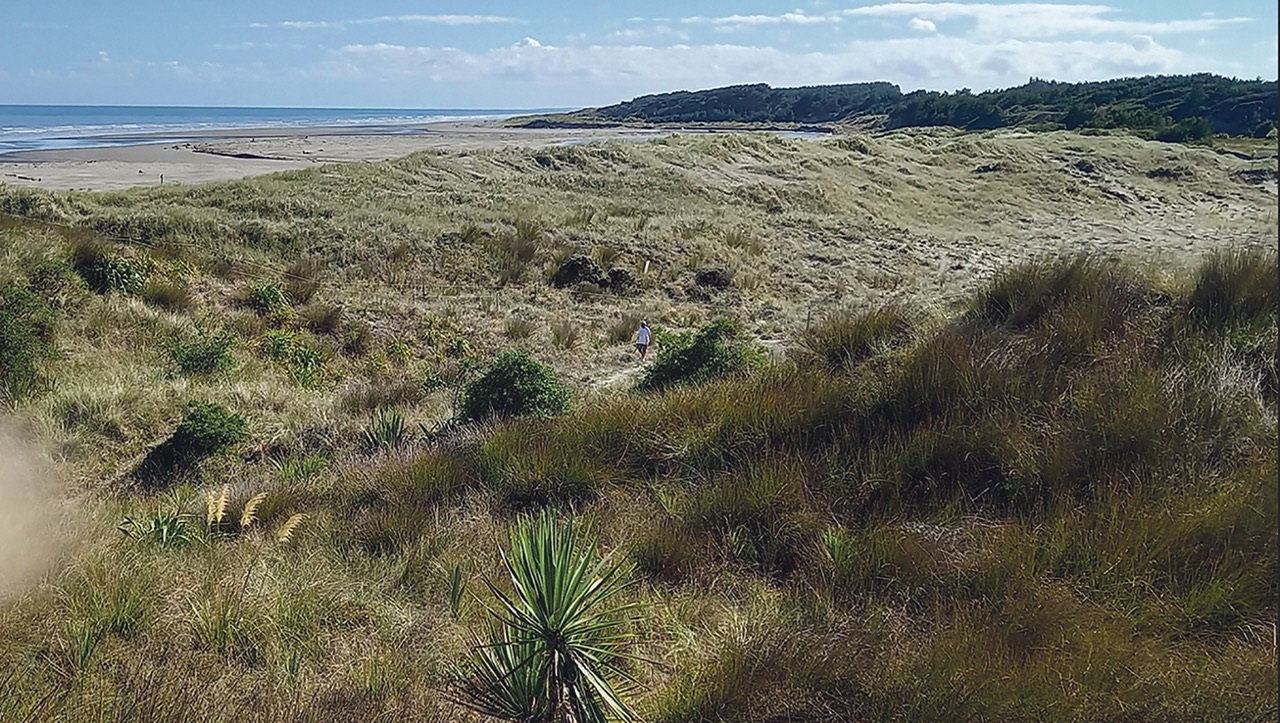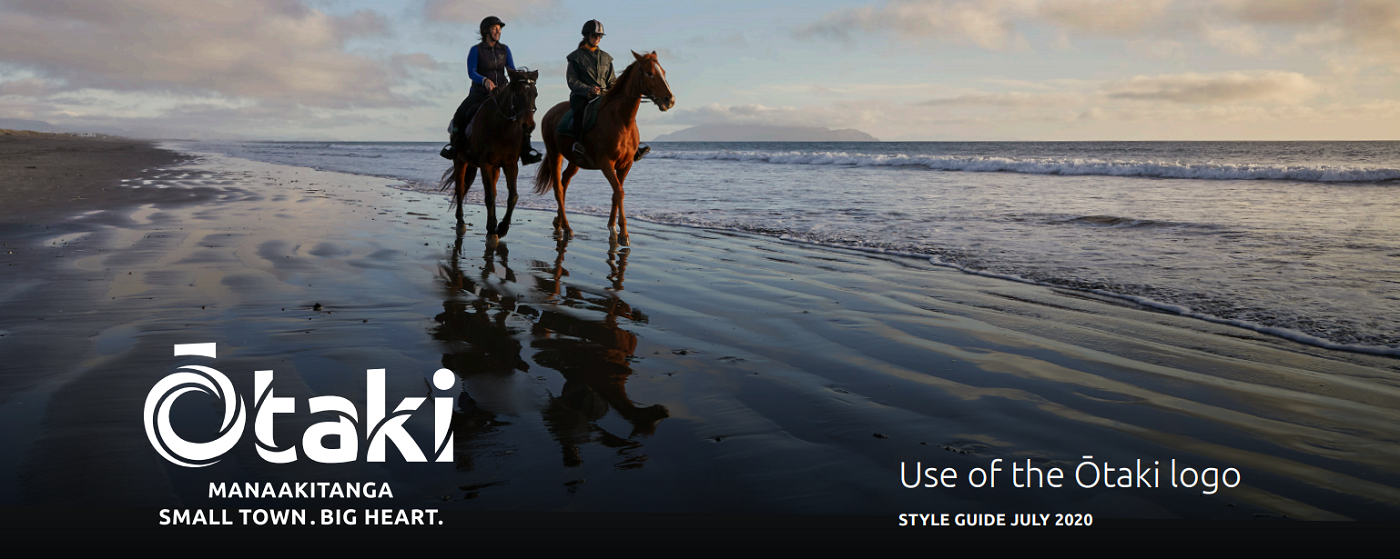
A group of Ōtaki volunteers can be credited for helping to hold back the sea along eight hectares of the Waitohu Stream estuary at the northern end of Ōtaki Beach – and it wasn’t even what they initially set out to achieve.
“Our mission when we established the Waitohu Stream Care Group 23 years ago was to address the pollution and erosion we were seeing in the stream,” says group chair Lynda Angus. “With some funding from Greater Wellington Regional Council, we established a nursery to grow locally sourced seeds which we transplanted to the estuary.
“We quickly realised we needed to factor in the health of the nearby wetlands and dunes as it’s all connected, so we expanded our scope.”

The dunes near the Waitohu Stream, at the northern end of Ōtaki Beach.
Photo supplied
Dune restoration, which provides natural protection from coastal erosion and flooding, soon became a key focus for the group. With support from Kāpiti Coast District Council, volunteers started to fill gaps in the dunes with logs and, once enough sand had been captured, planting species to hold it in place.
“Dunes are highly evolved, dynamic natural ecosystems that not only protect what’s behind them, they sustain our beaches and create habitat for some amazing plants and birds,” Lynda says. “Despite the pelting they take from wind and waves they are actually really fragile.
“What makes them resilient is the vegetation that grows on them. Our work has focused on re-establishing the foredune with spinifex and pīngao, and we are now progressively planting the back dunes as well.”
A single spinifex plant can trap 16 cubic metres of sand a year, which makes it the perfect plant for quickly rebuilding dunes and restoring the natural landscape character. Dunes can now mend themselves after storms, which is the wonder of spinifex and their long roots and runners.
Now known as the Waitohu Stream and Dune Care Group, the work of its volunteers has been recognised with numerous environmental awards, including the Wellington Region Conservation Award, National Green Ribbon Award, NZ Plant Conservation Network Award, the Dune Restoration Trust of NZ Award, and the Wellington Airport Regional Community Awards.
“When you see the thriving estuary and dunes today it’s hard to imagine what was there previously,” Lynda says. “It’s a wonderful resource for the people of Kāpiti to enjoy, and it is a great example of how land and rivers can be remediated in a team approach between councils and volunteers.”
Meantime, the group is always looking for new volunteers at their nursery near the beach at Moana Street. They are also happy to host school and community groups, business and government employee groups for a once-a-year community contribution – anything that supports and educates people about coastal vulnerabilities and remedial work to protect the beach environment.
For the second year running, the council has donated several hundred spinifex for children and families to plant during a Matariki event on Monday (July 10). The Waitohu Stream and Dune Care Group organised the planting, followed by sharing of kai. Contact Lynda on 020 4596 321 or at waitaheke@gmail.com to register your interest.
A photo display at Ōtaki Library is planned for September, which will show the difference 23 years of hard restoration work has made to the Waitohu Stream estuary and surrounding dune system.
– Source: KCDC
Want to learn more about dune restoration and the work the community is doing to take care of our dunes? Check out a video series produced by the Coastal Restoration Trust to raise awareness of dune restoration in Kāpiti: coastalrestorationtrust.org.nz/resources/crt-resources/our-coast-video-series/
LATEST POSTS
- Downtown PostShop, Kiwibank, Lotto in limbo
- Culinary icon Ruth Pretty moves on
- Local school lunches feed 1000 - Ōtaki Today
- Driver nabbed on expressway with kids at 175km-h
- Blazes worst I’ve seen – fire chief
- Cobblers Soup team looking for helpers
- Community gets behind Te Horo Hall fund
- Library recycling old domestic batteries recycling old domestic batteries
- Reservoir work progresses apace
- Murals brighten Te Horo Beach toilets
- Local SAR teams help in bush search
- New passion, new business for busy Bee
- Kite crazy
- Green waste beach dumping concerns
- Six-month bridge lane closure looms
- End of an era as Raukawa Dairy closes
- Community at heart of Mary-Jane’s ONZM
- Cops nail burnout hoons
- Racing club development goes for consent
- Pizza workers claim exploitation
- Memories revived as teen friends reunite
- All Saints gets a spruce-up
- Kāinga Ora reveals new homes
- Challenges, but optimism for Ōtaki shops
- New first response unit for Ōtaki

